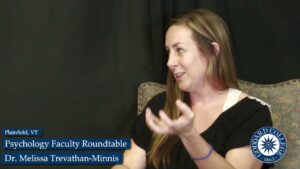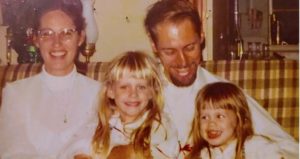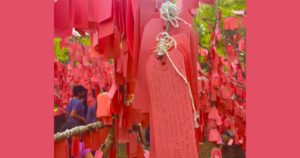 Goddard MFA in Creative Writing faculty member Micheline Aharonian Marcom, along with four other artists and writers, for the past year and a half has been working on The New American Story Project, a digital oral history project recording the stories of children who have fled violence in Central America and have come to the United States as refugees. Over 168,000 children showed up alone at the U.S. border in the last two years.
Goddard MFA in Creative Writing faculty member Micheline Aharonian Marcom, along with four other artists and writers, for the past year and a half has been working on The New American Story Project, a digital oral history project recording the stories of children who have fled violence in Central America and have come to the United States as refugees. Over 168,000 children showed up alone at the U.S. border in the last two years.
Read the first ten stories at The New American Story Project. More stories are on the way. Follow on Instagram for story clips and photos.
JoAnne Tompkins, a current student in the Goddard MFA in Writing Program in Port Townsend, WA, interviews Aharonian Marcom about The New American Story Project (NASP).
JT: NASP is a storytelling website where new Americans can share their stories. Its current focus is on unaccompanied Central American minors. In your latest novel, The New American, a young undocumented Guatemalan-American college student is deported to Guatemala and decides to return home, crossing Mexico and the Sonoran Desert. It deals with questions of undocumented immigrants, refugees and lives lived in the shadows. What are the benefits and hazards of your creative work being so deeply intertwined with your social justice work?
MAM: My creative work and my work for justice and truth-telling have always been aligned. One of the main things that drives me is the belief that stories matter so much for human culture. And I think it is vital to support and stimulate assorted voices, divergent points of view, and that we must preserve and encourage the unheard, those that lie outside the widely known. I personally have always been obsessed with stories which have, for whatever reason, been denied, forgotten, erased, or ignored, including the first big story I took up which was that of my grandmother’s life and how she survived the Armenian genocide and became a child refugee. I don’t believe anyone ever recorded or asked her to tell her story. In fact, to this day the Turkish government denies that a genocide even occurred. There is no official history about it, there are our stories. Our voices. Eighty-seven years later, I began the work of trying to piece together her life in the first novel I wrote Three Apples Fell From Heaven.
we must preserve and encourage the unheard, those that lie outside the widely known
JT: Many writers have origin stories about their call to writing or a particular story. What is the origin story for NASP? When did you know you were going to make this happen?
MAM: In order to write The New American I had to do most of my research online because this was, and remains, something that is happening now. I couldn’t, as I do when I write novels based on historical events, go to the library and read books about it. I read newspaper and magazine articles, watched documentaries and YouTube videos and the like. There were so many stories I heard that moved me deeply. After I finished the first draft of The New American, I wanted to create a platform whereby lots of people could tell their stories in their own words, a sort of accompaniment to my novel. So in the spring of 2015, I went to a local public school in Oakland with several of my Mills graduate students with the idea of teaching a creative writing workshop to newly arrived immigrants. I thought that the kids could write their stories and we would publish them. But after a few weeks, we realized that the best way to hear the stories of these kids who had recently arrived from Central America, kids who had fled terrible violence, was to spare them the classroom assignment, and instead record their stories as we interviewed them one-on-one. That really was the beginning of the digital expression NASP would take and which has grown now to include photography, video, monologues of interviews, audio clips as well as data and statistics.
JT: The children interviewed, photographed and filmed through The New American Story Project have remarkable and heartbreaking stories. Is there one story that has particularly impacted you as a person and writer? Why?
MAM: The stories we, Claire Calderón and I—she was a graduate student at that time and worked closely with me on the project and still works for NASP—heard were all haunting. Yes: heartbreaking. But I still remember the moment I knew I had to pursue this project, that I was obliged as a storyteller, a writer and a witness, to record and to then move these stories into the world. It was during one of the initial interviews we did with a 17 year old girl from Guatemala, in fact this is the first story on our site today. The girl, “Vielma” (all the names of the kids are changed to protect their identity and their portraits are not matched) came in and sat down with us in the library. We had gotten to know her a little during the workshop, but she was a very quiet student, I don’t recall her ever saying anything in class. Then we turned on the microphone and she immediately opened up, spoke in a litany almost, as if an entreaty: “They killed my father. Then they tried to kill me two times. That’s why I came here. I still don’t know for what reason.” She told us. “Why is life so unfair to me?”
JT: What were the greatest challenges in getting this project off the ground? For those of us considering venturing into social activism of this type, what hard-earned advice would you give?
MAM: I think, similar to writing a novel, you just have to be dogged and driven. I have had doubts about this project along the way, as I often do when I’m writing a book, but as I said: I am obliged. I have given my commitment to NASP and want to see it through to some kind of completion. I have also been very lucky to find extraordinary individuals who now make up the NASP team: Claire Calderón, Sara Campos, Ed Ntiri, Lonny Shavelson and Deborah Sherman. My advice? Ask your writer and artist friends to join you! That’s what I did.
JT: Has this project changed you as a person and writer? How?
MAM: I’m learning so much. This, unlike novel-writing, is collaborative: a collective vision. And requires a large skill set: film editing, fine arts photography, web design, story editing, audio editing, etc. There is no way I could have done this on my own.
JT: When you look over all NASP has accomplished since it began a year and a half ago, what do you feel most proud of?
MAM: From nothing, just an idea, we have made something! You can go online right now and read 10 stories and see photos, a new video is coming soon, we have a logo, a name, a site…we exist! It’s been a tremendous amount of work to get here, but it wasn’t that long ago that just Claire and I were traipsing around Oakland with a microphone in her backpack trying to talk to kids. Now we have recorded 44 interviews.

JT: The NASP website indicates that the children coming across the border from war and drug-torn areas are called “refugees” by some but “migrants” by other. Their plight is seen as “a humanitarian crisis” or “a threat to national security” depending on the speaker. Why are the specifics of language used to describe these children’s situation so important? What can NASP and the rest of us do to ensure that all children, regardless of country of origin, are seen through the lens of their humanity rather than as political tools?
MAM: The reason the language used about the kids, in this case, is so important, is because the United States is signatory to several treaties that prohibit the return of an individual to a country where he or she faces persecution. If you call the kids “migrants” you owe no such protections under our laws. But these children, by any stretch of the definition, are refugees: they are fleeing persecution and they have well-founded fears of being persecuted if they are returned to their countries. Honduras, El Salvador and Guatemala are today three of the most violent countries on earth. The impunity rates for murder hover above the 95th percentile in each nation. As Wendy Young, head of the organization Kids In Need of Defense, said in her interview: “People are presenting themselves at our border and saying, ‘I need safety. I need help.’ They’re running for their lives.”
JT: I understand NASP is about to launch its revamped website. What is your new vision for the site?
MAM: Our new vision is more of a magazine style: where you can see color photos, read long stories, see videos, hear audio clips, and find up-to-date data. We are not done yet, there’s more to come! Follow our stories and photography on Instagram @na_storyproject and visit the website www.newamericanstoryproject.org. Share the stories. Help us get the word out.

JoAnne Tompkins is a writer living in Port Townsend, Washington. Her fiction and nonfiction have appeared in journals such as Stratus: Journal of Arts and Writing, Fine Linen and High Country News. She is currently completing her MFA in Creative Writing at Goddard College.
Micheline Aharonian Marcom has published five novels. She has received fellowships and awards from the Lannan Foundation, the Whiting Foundation, and the US Artists’ Foundation. She is the founder of The New American Story Project, a web-based digital oral history project. www.newamericanstoryproject.org







